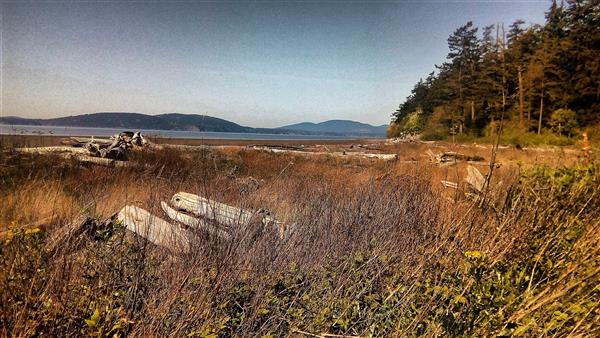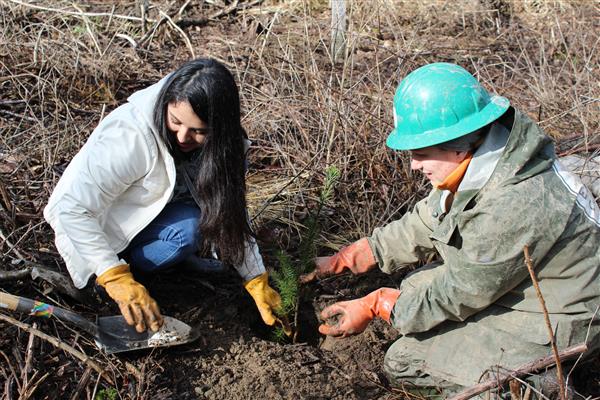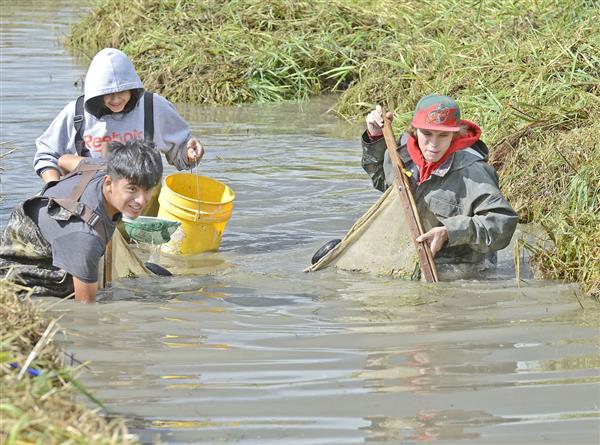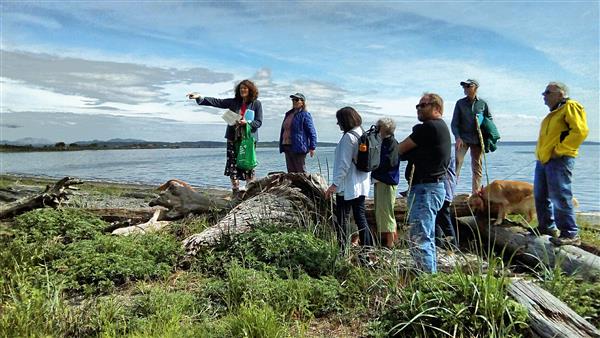
Skagit Land Trust's History and Mission
Skagit Land Trust conserves wildlife habitat, agricultural and forest lands, scenic open space, wetlands, and shorelines for the benefit of our community and as a legacy for future generations.
Skagit Land Trust was founded in 1992 by three visionary leaders and 32 Charter Members. The Trust is a respected local organization and is recognized as an innovative leader in conservation. The staff, board members, and 400 active volunteers are joined by over 1,700 family and business supporters (members) to protect the most important and beloved places in Skagit County. Today, the amount of land and habitat protected by the Trust has grown to over 10,000 acres, including more than 48 miles of shoreline. The Trust is currently working on a dozen new projects under the guidance of a Conservation Strategy that helps protect the best, most at-risk, and beloved lands first.
 In 2009, Skagit Land Trust became one of the first land trusts in the nation to receive official accreditation from the national Land Trust Accreditation Commission and received renewed accreditation in 2015 and 2020. Accreditation recognizes the Trust's dedication to following rigorous standards and practices established by the national commission to ensure the long-term viability of the organization and protection of the areas that we conserve.
In 2009, Skagit Land Trust became one of the first land trusts in the nation to receive official accreditation from the national Land Trust Accreditation Commission and received renewed accreditation in 2015 and 2020. Accreditation recognizes the Trust's dedication to following rigorous standards and practices established by the national commission to ensure the long-term viability of the organization and protection of the areas that we conserve.
Core Values
To accomplish our work Skagit Land Trust works in a manner that reflects fundamental shared values. We believe in:
Sound Ecosystems. The basis for all our conservation work begins with the understanding that a high quality of life requires diverse and resilient ecosystems.
Sustainable Stewardship. We strive to be good land stewards committed to the long-term sustainability of native species and natural ecological processes.
Engaged Volunteers. Only with the passionate and dedicated efforts of volunteers at all levels of our organization will we be able to fully accomplish our goals.
Involved Members and Community. We value our members’ ideas and support and strive to keep all members engaged and our greater community informed and involved.
Effective Collaboration. We recognize that the best conservation is accomplished by working with a diverse array of people, communities and organizations towards common goals.
Integrity. We adhere to the highest ethical standards in carrying out our mission, strive for transparency in our operations and accept full accountability for the decisions we make.
.jpg&size=600)
The Vision We Work Towards - It's All Connected
In our vision, Skagit County is a place where people live in harmony with their natural environment. Freshwater lakes, wetlands and rivers are productive, natural marine shorelines serve as expansive wildlife habitat while protecting our communities, lush forests dominate the landscape, and populations of native fish and wildlife thrive. Natural places are linked in a green system that allows for natural processes to take place . Breathtaking views are found around every corner. The county’s rural landscapes support individuals working locally in sustainable natural resource and agrarian economies alongside vibrant businesses and industries situated in towns.
Residents and visitors understand, appreciate and work to protect “the Skagit” so that a beautiful, healthy landscape is left for future generations of people and wildlife. Sustainable resource and nature-based economies such as farming, fishing, forestry, tourism, outdoor recreation, and conservation remain major underpinnings of the economy. There are numerous situations where wildlife/conservation and resource economies exist together.
Complete, livable urban communities promote the conservation of the region’s significant resource lands, open spaces and wildlife habitat. Population centers don’t sprawl. Kids, parents, young and old - in all neighborhoods, towns, cities and rural areas - interact with nature often. It is easy to do so. Trails connect communities to each other. There is an immediate feeling of “rural” outside of urban areas. Development is out of harm’s way. This allows our rivers and marine shorelines that pass through, or near to, population centers to be stewarded as assets where natural processes take place. Skagit’s rivers, floodplain lands, native forests and marine shorelines are key underpinning to our sense of place

Skagit's citizens and visitors value nature. Citizens from all walks of life and corners of the Skagit work to protect the environment. They know that their quality of life, health and the vibrancy and sustainability of the Skagit is based on the surrounding natural world. They assist in stewarding nature through volunteer activities, educational activities and community engagement. The community and its leaders acknowledge and appreciate that Skagit County is part of a dynamic environment and plan according. There is a strong sense of place in the Skagit. People are committed to supporting a sustainable environment for the benefit of current and future generations of people and wildlife.

How We Conserve Land
Skagit Land Trust is a non-profit organization that conserves land by purchasing and accepting donation of land and conservation easements, and by assisting partners and agencies with land conservation projects. Some of the Trust's most successful projects have protected habitat areas across private ownership boundaries, helping residents, ranchers, farmers, and businesses to join a wider protection network. Our expertise and reputation for partnership building, creative solutions and efficient, nimble land protection uniquely positions Skagit Land Trust at a critical time in Skagit County’s history.

Our Unique Position
Thirty years have passed since Skagit Land Trust was founded. We combine a passion for conservation in the Skagit with an understanding that lasting conservation must be coupled with thoughtful, long-term stewardship and community engagement to endure.
The Trust has gone from 32 charter members when it was founded in 1992 to over 1700 supporters today composed of members, partners, landowners, volunteers and a hard-working staff and board. By working with over 40 partner organizations and over 400 volunteers, we help our community save special lands for wildlife and for our community. Skagit Land Trust has protected over 10,000 acres and 48 miles of river and marine shoreline. We assist numerous conservation successes through partnerships in land conservation and stewardship, and participation in local and state planning and advocacy. Our book, Natural Skagit, is the premiere representation of Skagit County's natural amenities and is purchased for residents and visitors around the world. Our land management program that engages community members of all ages to help steward our protected areas is considered one of the best in the region.
.jpg&size=600)
Because of our work and collaboration, many good things have happened. The Skagit River is slowly returning to the natural conditions that once supported great salmon runs. Two of the region’s largest heronries have been protected and every year we learn more about these nesting areas with volunteer assistance. Anacortes Forest Lands will forever be a permanent community treasure. Hurn Field has become a wildlife sanctuary that is regarded as one of the top tourist stops on Highway 20. You can hike to the top of Guemes Mountain and enjoy one of the most expansive views in Puget Sound or ride your bike to watch waterfowl at Barney Lake on the edge of Mount Vernon. We are fortunate to live in “The Skagit" but also have a big responsibility if we are to protect enough of this land to pass on a resilient ecosystem for wildlife, plants and people to future generations.
Skagit County – It’s Worth Protecting
With a population of 118,000 people, Skagit County in Northwestern Washington is a rural county renowned for its wild and scenic rivers, expansive floodplains, fertile agricultural lands, native forests and abundance of wildlife. This natural wealth, within 60 miles of the major metropolitan area of Seattle to the south and Vancouver B.C. to the north, makes the Skagit stand out as a special region in the United States.
The Skagit is an intersection of superlatives. It is a biologically and agriculturally rich, rural valley sandwiched between rapidly growing metropolitan areas. It is a green jewel holding the 3rd largest river on the west coast of the lower 48 states. 394 glaciers feed the Skagit River – the most glaciers left in a concentrated area in the continental United States. The Skagit is one of the largest strongholds of salmon remaining in the continental US and hopes for restoration of salmon populations in Puget Sound hinge on this river. The mixture of marine and freshwater corridors, agricultural areas and wetlands produces exceptional bird habitat. From bald eagles to peregrine falcons, to snow geese and trumpeter swans - there is no better place in Western Washington to see wintering populations of birds. The large contiguous eel grass beds of Padilla Bay help support mega heron colonies and a large range of marine species. Millions of visitors pass through or come to the Skagit for its natural amenities annually. The Skagit serves as the gateway to North Cascades National Park on one side of the county and San Juan National Monument on the other. Add to this one of the largest forested areas remaining along the I-5 corridor, some of the least developed islands and marine shoreline, first-class soils and farmland, incredible vistas everywhere, a community deeply invested in their forest lands, agricultural lands and wildlife, and you have a remarkable intersection of unique natural features.
.jpg&size=600)
The Skagit is a nexus for people and nature. People choose to live here because of all the Skagit holds and its great diversity of ecosystems. It is natural then that Skagit Land Trust has evolved to protect a diverse array of natural lands to ensure ecosystem resiliency while also saving special places where people can appreciate Skagit's beauty and natural heritage.
The natural riches in Skagit County are, however, under threat.
With Skagit County's location between two growing metropolitan areas, loss of our natural heritage is happening at an alarming rate. Sprawl and development are particularly placing lowland ecosystems in at risk - streams, floodplains, lowland forests, marine shorelines, freshwater wetlands and agricultural lands. Yet under this threat, our varied geography, rural economy, and flood-prone areas have allowed Skagit County to resist convergence to a suburb of Seattle/Everett to the south, or Bellingham to the north. Given our location and our community spirit, Skagit County offers one of the best chances for conservation of critical wildlife habitat, expansive open space, and the integration of nature and communities in Western Washington.